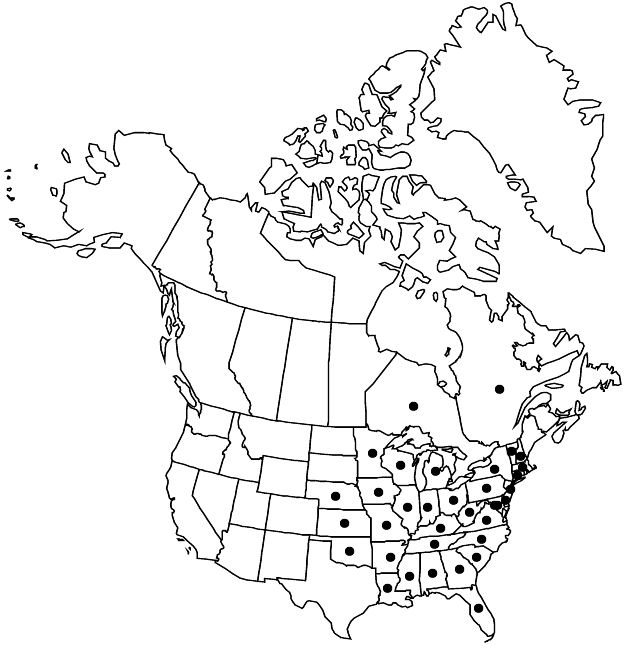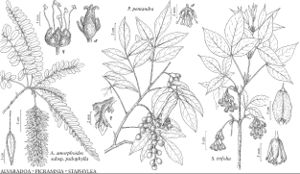Staphylea trifolia
Sp. Pl. 1: 270. 1753.
Plants suckering, 2–4 (–5) m. Leaves: leaflet blades elliptic to widely obovate, 4.5–13 cm, margins serrulate to serrate, apex acuminate, abaxial surfaces ± villous, densely when young, adaxial glabrous or sparsely hairy. Flowers campanulate; sepals pale greenish, greenish pink to pale-pink to whitish, 4–7 mm; petals spatulate, 6–8 mm, apex recurved; filaments not or barely exserted, 6–8 mm, equal to or slightly longer than petals, basally villous; pistils villous, styles ± equal to stamens. Capsules obovoid, 3–5 cm. 2n = 72.
Phenology: Flowering Apr–Jun.
Habitat: Deciduous forests, often humid, often at bases of rocky slopes, floodplain woods, thickets, stream banks
Elevation: 0–1000 m
Distribution

Ont., Que., Ala., Ark., Conn., Del., D.C., Fla., Ga., Ill., Ind., Iowa, Kans., Ky., La., Md., Mass., Mich., Minn., Miss., Mo., Nebr., N.H., N.J., N.Y., N.C., Ohio, Okla., Pa., S.C., Tenn., Vt., Va., W.Va., Wis.
Discussion
Leaves of Staphylea trifolia are sometimes 5-foliolate.
The relationship of Staphylea trifolia with the northern Mexican S. pringlei S. Watson remains to be determined.
Selected References
None.
